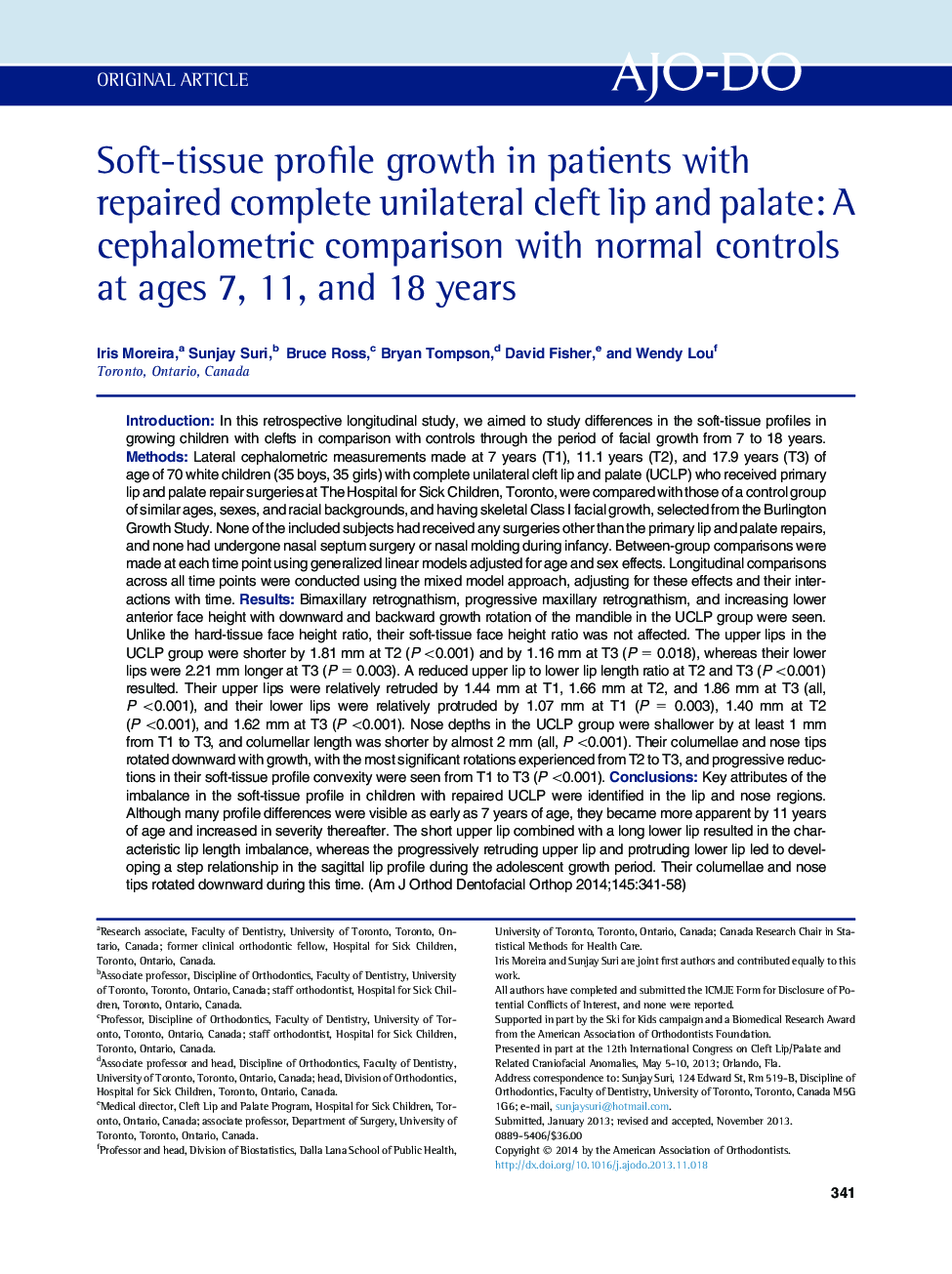| Article ID | Journal | Published Year | Pages | File Type |
|---|---|---|---|---|
| 3116589 | American Journal of Orthodontics and Dentofacial Orthopedics | 2014 | 18 Pages |
IntroductionIn this retrospective longitudinal study, we aimed to study differences in the soft-tissue profiles in growing children with clefts in comparison with controls through the period of facial growth from 7 to 18 years.MethodsLateral cephalometric measurements made at 7 years (T1), 11.1 years (T2), and 17.9 years (T3) of age of 70 white children (35 boys, 35 girls) with complete unilateral cleft lip and palate (UCLP) who received primary lip and palate repair surgeries at The Hospital for Sick Children, Toronto, were compared with those of a control group of similar ages, sexes, and racial backgrounds, and having skeletal Class I facial growth, selected from the Burlington Growth Study. None of the included subjects had received any surgeries other than the primary lip and palate repairs, and none had undergone nasal septum surgery or nasal molding during infancy. Between-group comparisons were made at each time point using generalized linear models adjusted for age and sex effects. Longitudinal comparisons across all time points were conducted using the mixed model approach, adjusting for these effects and their interactions with time.ResultsBimaxillary retrognathism, progressive maxillary retrognathism, and increasing lower anterior face height with downward and backward growth rotation of the mandible in the UCLP group were seen. Unlike the hard-tissue face height ratio, their soft-tissue face height ratio was not affected. The upper lips in the UCLP group were shorter by 1.81 mm at T2 (P <0.001) and by 1.16 mm at T3 (P = 0.018), whereas their lower lips were 2.21 mm longer at T3 (P = 0.003). A reduced upper lip to lower lip length ratio at T2 and T3 (P <0.001) resulted. Their upper lips were relatively retruded by 1.44 mm at T1, 1.66 mm at T2, and 1.86 mm at T3 (all, P <0.001), and their lower lips were relatively protruded by 1.07 mm at T1 (P = 0.003), 1.40 mm at T2 (P <0.001), and 1.62 mm at T3 (P <0.001). Nose depths in the UCLP group were shallower by at least 1 mm from T1 to T3, and columellar length was shorter by almost 2 mm (all, P <0.001). Their columellae and nose tips rotated downward with growth, with the most significant rotations experienced from T2 to T3, and progressive reductions in their soft-tissue profile convexity were seen from T1 to T3 (P <0.001).ConclusionsKey attributes of the imbalance in the soft-tissue profile in children with repaired UCLP were identified in the lip and nose regions. Although many profile differences were visible as early as 7 years of age, they became more apparent by 11 years of age and increased in severity thereafter. The short upper lip combined with a long lower lip resulted in the characteristic lip length imbalance, whereas the progressively retruding upper lip and protruding lower lip led to developing a step relationship in the sagittal lip profile during the adolescent growth period. Their columellae and nose tips rotated downward during this time.
